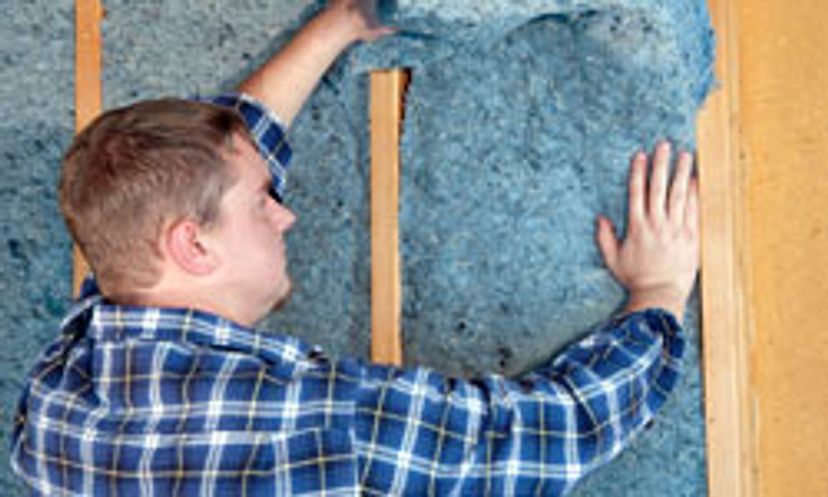
About This Quiz
There are at least 10 types of insulation commonly used to keep your house warm. Using the right insulation can save you lots of money on your energy bill, especially if you live in an extreme climate. Take our quiz and find out how much you know about the different types of insulation and their properties.To get the most out of your home's insulation, check its R-value, a measure of thermal resistance recommended by the United States Department of Energy. The higher the R-value, the more effective a home's insulation will be.
Fiberglass insulation is a fibrous material made of sand and recycled glass that doesn't retain moisture. R-values for fiberglass insulation are on the high side, ranging from R-11 to R-38.
You can choose from two types of fiberglass insulation, depending on your needs: fiberglass loose-fill insulation and fiberglass blanket insulation.
Advertisement
You can purchase fiberglass blanket insulation in either batts or rolls and in different densities, widths and lengths. Fiberglass loose-fill insulation is blown into areas that need insulation.
Since it improves energy efficiency in your home, insulation reduces the amount of fossil fuel combustion needed to cool and heat it. Therefore, the amount of carbon dioxide emitted into the atmosphere is reduced.
Made mostly from shredded newspapers, cellulose insulation is combustible and retains moisture. You will need to use up to three times more cellulose than fiberglass to achieve the same insulating efficiency for your home.
Advertisement
You can buy polyisocyanurate insulation in several forms including liquid, sprayed foam and rigid foam board with an R-value ranging from R-5.6 to R-8. Foam-in-place applications are usually cheaper than installing foam boards, and the liquid foam molds well to all surfaces.
Typically used in concrete blocks, expanded polystyrene (EPS) is a specific type of polystyrene made of small plastic beads fused together. Molded expanded polystyrene (MEPS) insulation comes in small foam beads and is usually used to make foam board insulation.
Extruded polystyrene (XPS) is usually used as foam board insulation and is resistant to moisture, rot, mildew and corrosion. If you use it in your home for 15-30 years, you will save more energy over that period of time than is consumed by manufacturing the insulation.
Advertisement
Because spray polyurethane foam is an insulating foam plastic that's sprayed on as a liquid, which then expands many times over, it is excellent for use in attics, basements, roofs and ceilings.
To help cool your attic, you might want to install a radiant barrier, a single reflective surface that faces an open space. The radiant barrier will lessen radiant heat transfer from the underside of your roof to other attic areas; it can block 90 to 97 percent of the radiant heat hitting its surface.
Reflective insulation is similar to a radiant barrier, but combines a radiant barrier with other insulation material such as cardboard, plastic film, polyethylene bubbles or kraft paper. Commonly found between roof rafters and wall studs, it is designed to stop radiant heat transfer between open spaces.
Advertisement
Cotton insulation deserves high marks for its environmental qualities. It is produced from post-industrial recycled cotton fabrics, such as blue jeans, and offers good acoustical insulation properties.
Cotton insulation is so safe that installers don't need to wear respiratory or safety equipment and there are no warning labels on the product. It is treated with a nontoxic fire- and pest-repellant called Boron.
Mineral wool is made on average of 75 percent post-industrial recycled content. There are two kinds of mineral wool, rock wool and slag wool, and it comes in both blanket and loose-fill forms.
Advertisement